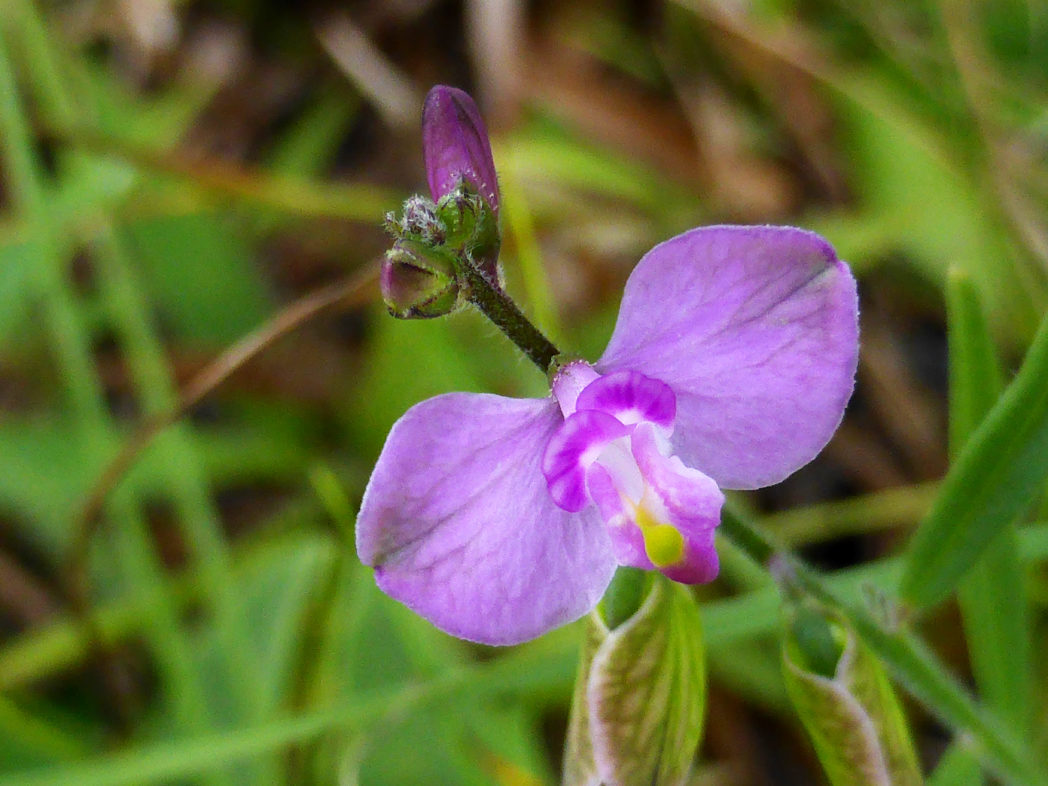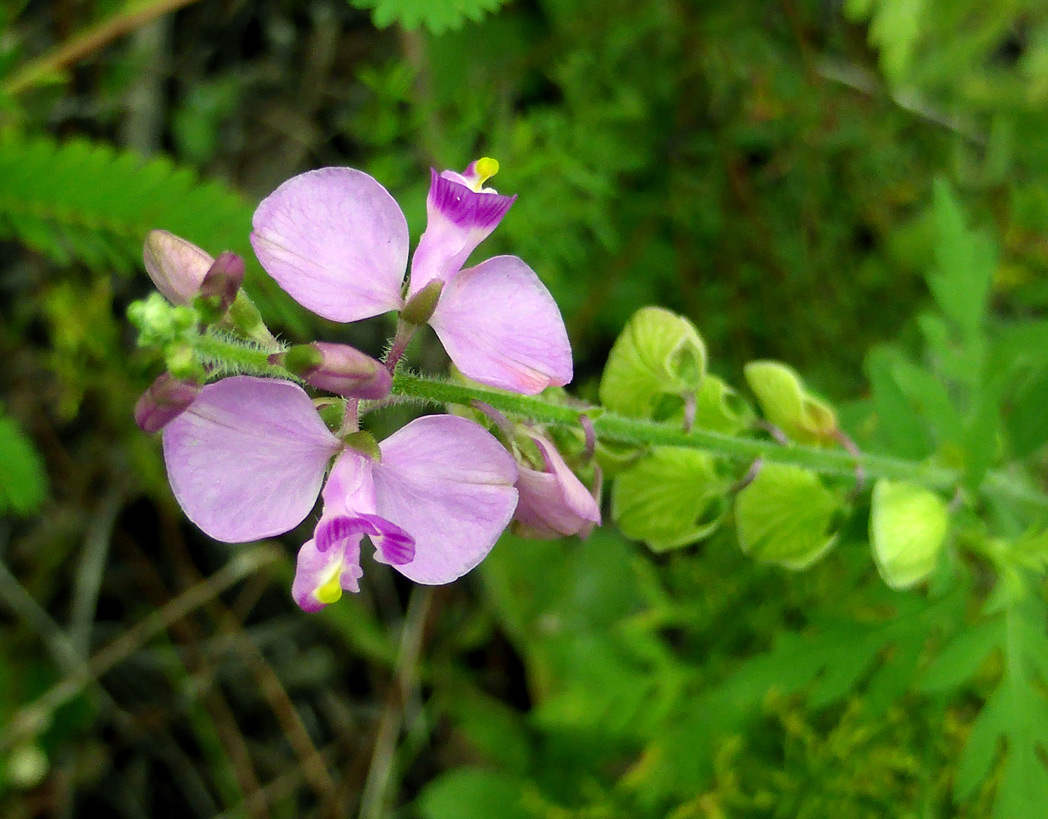Showy milkwort
Pictured above: Showy milkwort (Asemeia violacea) by Eleanor Dietrich. Click on terms for botanical definitions. View post as a PDF.
Despite its common name, Showy milkwort is a diminutive herbaceous wildflower with small flowers that are borne somewhat sparsely on terminal racemes. It is a summer-bloomer, but can bloom year-round in the southern part of the state. The flowers are attractive to bees, the plant’s primary pollinator. Showy milkwort occurs naturally in pinelands, prairies and open disturbed areas throughout Florida.

Flowers are dark pink to pinkish-purple. Sepals are broad, winglike and appear in pairs. The corolla is shorter and tubelike with a yellow spot on the upper lip. The leaf shape varies, but is typically lanceolate to oblanceolate. Leaves have entire margins, are about 1-inch long and are alternately arranged. Stems and leaf undersides are mildly pubescent. The fruit is an inconspicuous capsule. Seeds are small, black and pubescent.
Asemeia violacea was formerly classified as Polygala violacea and P. grandiflora. DNA testing in 2012 resulted in its taxonomic reclassification.
Family: Polygalaceae (Milkwort family)
Native range: Throughout Florida
To see where natural populations of Showy milkwort have been vouchered, visit florida.plantatlas.usf.edu.
Hardiness: Zones 8A–11
Soil: Moist to dry, well-drained, nutrient-poor soils
Exposure: Full sun
Growth habit: < 12” tall
Propagation: Seed, division
Garden tips: Showy milkwort is not grown commercially, but is often grown by wildflower enthusiasts. It is best suited for naturalistic landscapes and restorations, but does well in mixed wildflower gardens if planted in open, sandy areas. They are drought tolerant but not salt tolerant.

